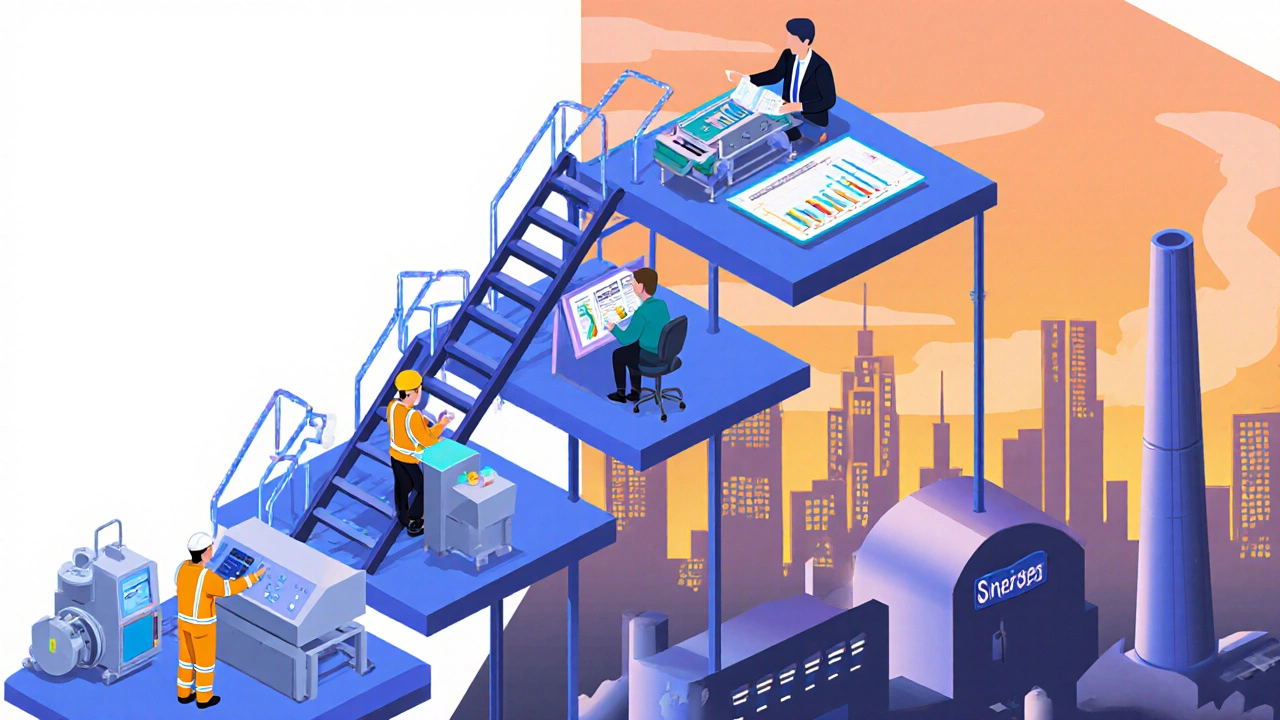Food Processing Salary Calculator
When you hear highest paying job in the food processing world, you probably picture a fancy office or a big factory floor. In reality, the Food Processing Industry is a fast‑growing sector that blends science, engineering, and logistics to turn farm produce into everything from frozen pizza to protein bars. The real question is: which role actually pulls in the most cash?
What makes a job "high‑paying" in food processing?
Salary levels in this sector depend on three core factors:
- Technical complexity: Jobs that require deep engineering or scientific knowledge command higher wages.
- Responsibility scope: Managing whole plants, budgets, or R&D pipelines adds a premium.
- Market demand: Shortages of specialized talent (e.g., food safety experts) push salaries up.
Combine those with location‑based cost‑of‑living adjustments, and you get a clear picture of why certain titles consistently top the pay charts.
Top high‑paying roles in the Food Processing Industry
Below are the six positions that regularly appear at the top of salary surveys, each introduced with a brief definition and why they earn big bucks.
Process Engineer designs, optimizes, and troubleshoots the machinery that turns raw ingredients into finished goods. Their expertise in automation, fluid dynamics, and process control is critical for efficiency, which directly impacts profit margins.
Plant Manager oversees the entire factory operation-people, production schedules, safety, and budgets. They are the bridge between the shop floor and corporate leadership, making decisions that affect daily output and long‑term profitability.
Production Manager focuses on line‑level execution: meeting output targets, managing shift supervisors, and ensuring quality standards are met without delay.
Food Technologist applies food science to develop new products, improve formulations, and guarantee nutritional compliance. Their role is especially lucrative in companies that prioritize innovation.
R&D Director leads research teams that create tomorrow’s snack, beverage, or meat alternative. Because successful R&D translates to multi‑million‑dollar product launches, this position earns a premium salary.
Quality Assurance Manager ensures every batch meets safety regulations and company standards. In an industry where recalls can cost millions, their expertise is highly valued.

Salary comparison at a glance
| Role | Average Salary (USD) | Typical Education | Key Responsibilities |
|---|---|---|---|
| Process Engineer | $115,000 | B.S. Chemical or Mechanical Engineering | Design & optimize production lines, lead capital projects |
| Plant Manager | $132,000 | B.S. Engineering or Business; MBA preferred | Oversee operations, budgets, safety, and workforce |
| Production Manager | $108,000 | B.S. Food Science or Industrial Engineering | Manage shift schedules, meet output targets, solve bottlenecks |
| Food Technologist | $95,000 | B.S. Food Science, Nutrition, or related | Develop new products, improve formulas, ensure compliance |
| R&D Director | $158,000 | Ph.D. in Food Science or related field | Lead innovation pipeline, manage labs, secure patents |
| Quality Assurance Manager | $102,000 | B.S. Microbiology or Food Safety | Implement QA systems, oversee audits, manage recalls |
From the table you can see the R&D Director typically leads the pack, followed closely by Plant Managers. Salaries can jump 20‑30% higher in high‑cost regions like the San Francisco Bay Area or New York City.
How to qualify for the top‑paying positions
- Earn the right degree. Engineering (chemical, mechanical) and food science are the most common foundations. For R&D Director roles, a Ph.D. adds significant leverage.
- Gain industry certifications. Look for Certified Food Scientist (CFS), Six Sigma Green/Black Belt, or HACCP auditor credentials. Employers view them as proof of practical expertise.
- Get hands‑on experience. Internships or entry‑level roles in a processing plant give you exposure to equipment, SOPs, and compliance protocols.
- Develop leadership skills. Even technical engineers need project‑management experience. Pursue an MBA or short‑term leadership courses if you aim for Plant Manager or R&D Director paths.
- Stay current with technology. Automation, AI‑driven quality monitoring, and sustainable processing are hot trends. Familiarity with PLC programming, data analytics, and green chemistry can boost your salary offers.

Geographic hotspots and market trends (2025)
While the food processing sector is global, certain regions pay a premium because of higher demand for specialized talent.
- United States - Midwest & West Coast: Companies like Tyson, Nestlé USA, and Impossible Foods cluster around Chicago, Dallas, and the Bay Area. Salaries here are 12‑20% above the national average.
- Europe - Germany & Netherlands: The EU’s “Clean Food” initiative fuels demand for R&D directors focused on plant‑based alternatives. Berlin and Rotterdam report the highest engineering wages.
- Asia - Singapore & Vietnam: Rapid expansion of convenience‑food factories is creating new plant‑manager openings, but salaries are slightly lower; however, generous expat packages often offset the gap.
Emerging trends that could reshape pay scales include:
- Increased automation - engineers who can integrate robotics command top dollar.
- Regulatory tightening - quality and safety managers see salary spikes as companies invest in compliance.
- Sustainability drives - roles focused on waste reduction and circular‑economy processes are becoming high‑value niches.
Career path and growth tips
Most high‑earning professionals start on the shop floor and climb up through a blend of technical mastery and management exposure.
- Entry Level (0‑3 years): Take roles such as Production Technician or Junior Engineer. Focus on learning SOPs, safety protocols, and basic equipment maintenance.
- Mid‑Level (3‑8 years): Move into Shift Supervisor, Process Engineer, or Food Technologist. Start leading small projects and obtaining certifications.
- Senior Level (8‑15 years): Aim for Production Manager, Plant Manager, or R&D Lead. At this stage, a postgraduate degree or an MBA adds credibility.
- Executive Level (15+ years): Positions like Plant Director or VP of Operations become reachable. Your portfolio should include successful plant expansions, patented products, or cost‑saving initiatives worth millions.
Key habit: keep a spreadsheet of your achievements-cost reductions, yield improvements, safety awards. Quantifiable results are the strongest bargaining chips when negotiating salary.
Frequently Asked Questions
Which job pays the most in food processing?
In 2025, the R&D Director is the highest‑paying role, averaging around $158,000 in the United States, followed closely by Plant Managers.
Do I need a Ph.D. to become an R&D Director?
A Ph.D. is common and highly advantageous, but some directors advance with a master’s degree plus extensive industry experience and a strong patent portfolio.
How much can a Process Engineer earn in high‑cost cities?
In places like San Francisco or New York, a Process Engineer can pull $135,000‑$150,000, especially if they lead major automation projects.
Are certifications worth the investment?
Yes. Certifications such as Six Sigma, HACCP, or Certified Food Scientist often add $10,000‑$20,000 to annual compensation and signal commitment to employers.
What’s the fastest way to transition from a Production Manager to Plant Manager?
Take on cross‑functional projects (budgeting, capital‑expenditure planning), earn an MBA or relevant leadership certificate, and document measurable improvements in throughput or cost savings.
Whether you’re a fresh graduate or a seasoned technician, targeting one of these high‑paying positions starts with the right education, strategic certifications, and a track record of delivering results. The food processing sector isn’t just about feeding people-it’s a lucrative career arena for anyone ready to blend science, engineering, and management.
